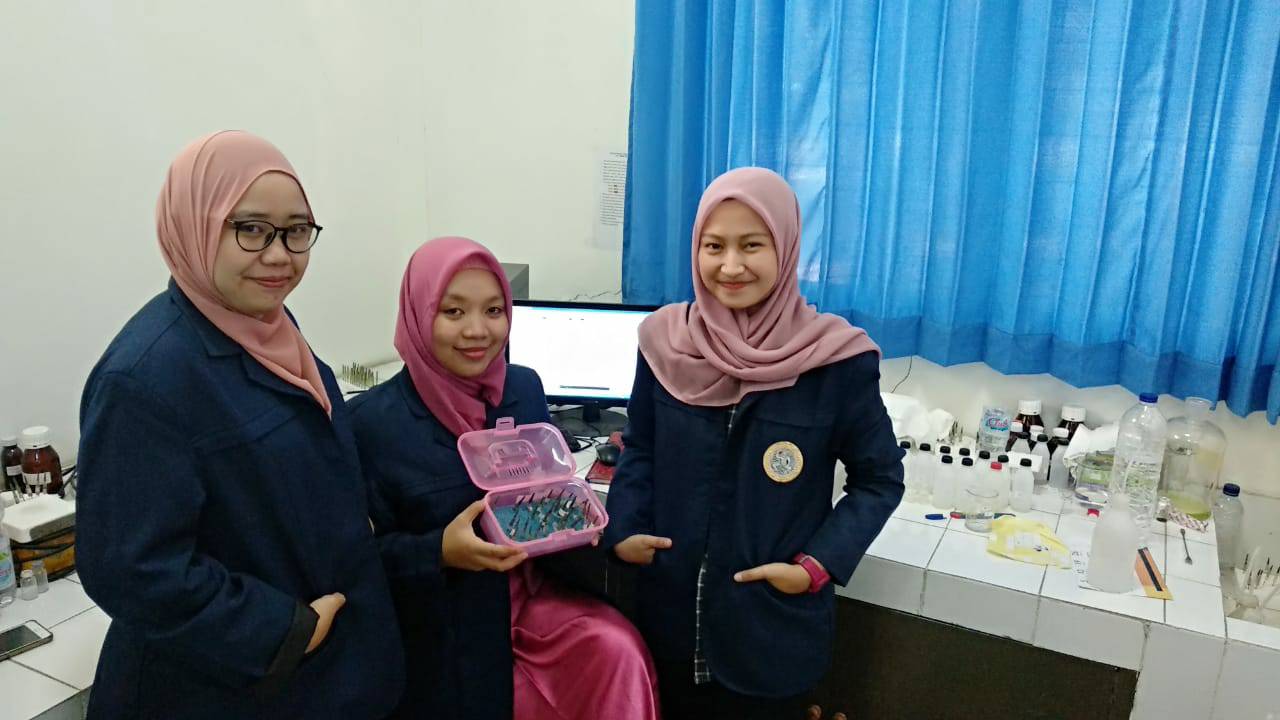UNAIR NEWS – Hyperpigmentation or melanin improvement generally occurs in countries with a tropical climate, such as in Indonesia. Based on data obtained from Dharmais General Hospital in Jakarta, in 2011, 119 people had skin cancer due to the long-term effect of hyperpigmentation. One of the whitening agents that can cause hyperpigmentation on the skin is arbutin compounds that can whiten the skin in a short time. According to the regulations of BPOM, the use of arbutin recommended in cosmetics is only 7%.
The HPLC and GC methods have been used as an analysis of arbutin levels in the research of Meda and Wisanu Thong Chai et al. However, this method has many weaknesses, such as long duration of analysis, complicated preparation stages, and expensive analysis costs. Based on these problems, Irawati Sholikhah, Qurratu A’yun Subki, and Wahyu Setya Rini, one of Universitas Airlangga PKM-PE teams, under the guidance of Drs. Muji Harsini, M.Si developed electrodes as arbutin whitening agent sensors using an effective and efficient voltammetry method.
“The research that passed the selection and was funded by the Directorate of Higher Education entitled Ferrocene Modified Graphene Oxide (GO) Electrode as Arbutin Whitening Agent Sensor,” explained Irawati as the PKM team leader.
According to Irawati, GO was chosen as the electrode material because it has good conductivity and mechanical properties with a wide potential range while ferrocene is used as a modifier because it has excellent stability and fast response for analysis.
“This research was conducted for approximately three months in the Analytical Chemistry laboratory and the Integrated Laboratory of Faculty of Science and Technology Universitas Airlangga,” she said.
At optimum condition, continued Irawati, linear sweep voltammetry current from ferrocene modified GO electrodes were proportional to the concentration of arbutin in 0.6-7µM concentration range. She also said that ferrocene modified GO electrodes provided sensitive, selective, precise, and accurate measurement results and showed proper arbutin analysis in cosmetics samples taken from the market.
“These results showed that the ferrocene modified GO electrode is a promising electrode as an arbutin whitening agent sensor with the voltammetry method,” she concluded.
Author: PKMPE Novelty Electrode GO TEAM
Editor: Nuri Hermawan





